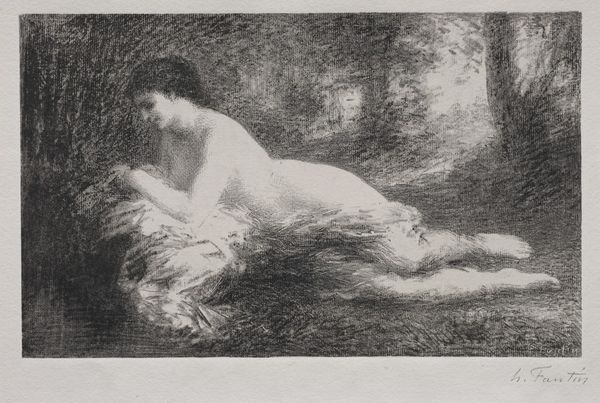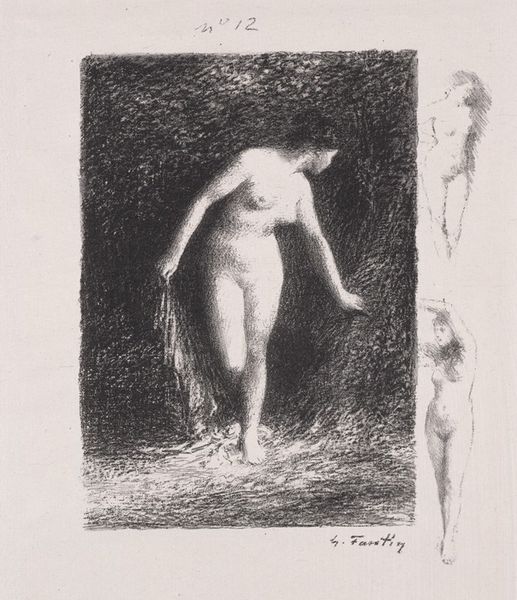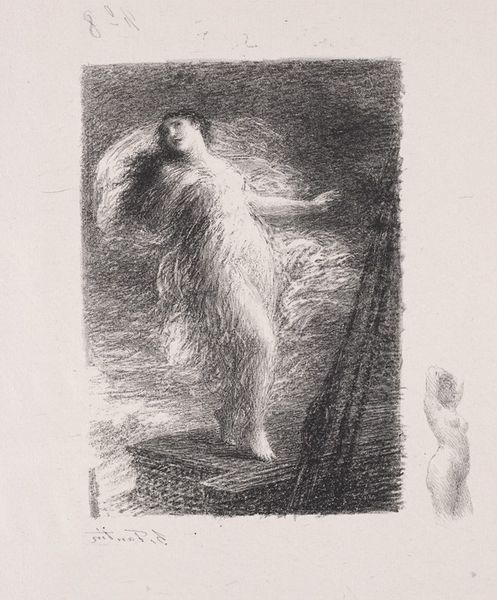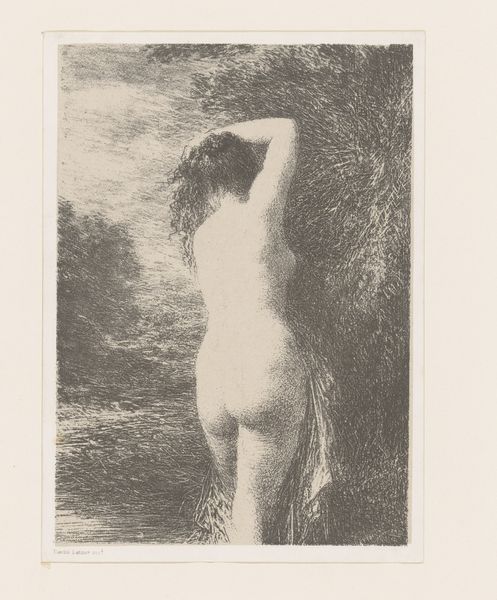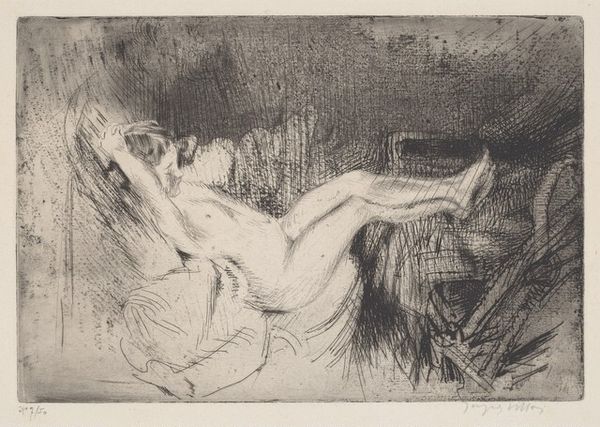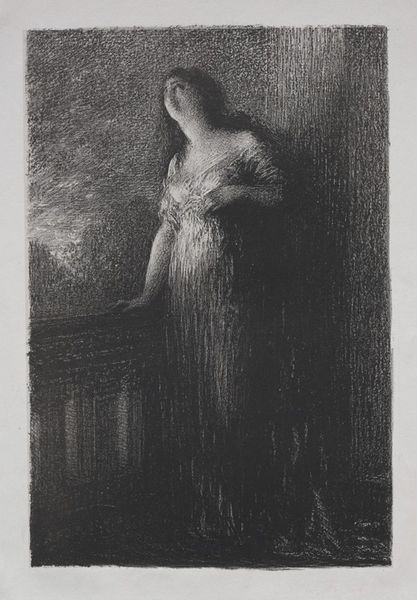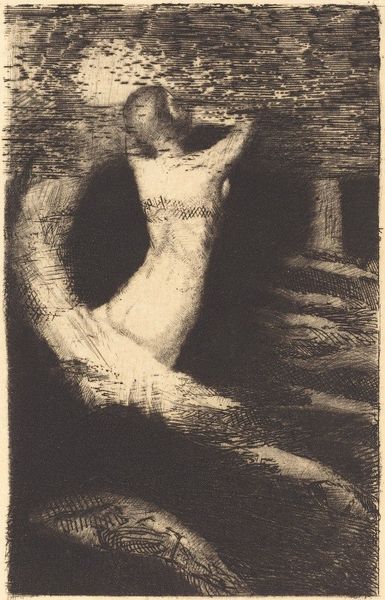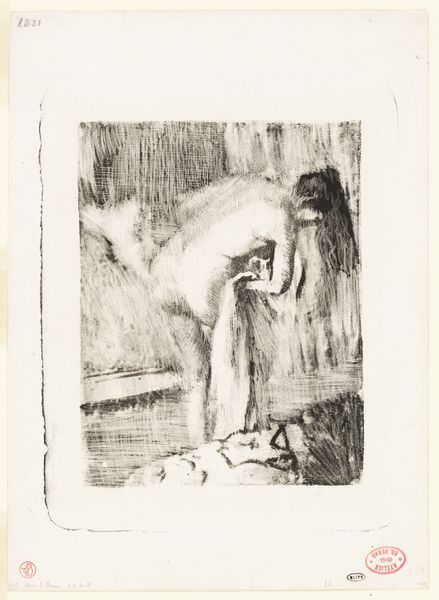
drawing, pencil
#
portrait
#
pencil drawn
#
drawing
#
figuration
#
pencil drawing
#
pencil
#
symbolism
#
academic-art
#
nude
Copyright: Public Domain: Artvee
Curator: Looking at Henri Fantin-Latour's "Ariadne," created around 1900 using pencil on paper, I’m immediately struck by its textural complexity. The shading creates a somber, almost ethereal mood. Editor: Yes, it is fascinating how Fantin-Latour approached depictions of the female nude within the academic art establishment. Note that the work's title references classical mythology and connects the image to the broader art historical canon, giving the work added significance in its social and artistic context. Curator: Precisely. Examining the process reveals the artist's intention, focusing on the careful layering of graphite. Fantin-Latour is less interested in creating an illusion of perfect flesh than he is with the materiality of the medium itself, exploiting pencil marks to express movement. Editor: Consider the audience viewing it. Drawings like "Ariadne" were likely consumed within the art market differently from, say, a Salon painting. How did access to these artworks, through reproduction or private viewings, shape ideas about sexuality and representation in the late 19th century? The politics of who got to see this, and under what circumstances, really matter. Curator: Agreed. Fantin-Latour subverts expectations regarding luxury and commodity. This work highlights the skill involved in draftsmanship. By showcasing this in a subject typically rendered with smooth sensuality, we’re made aware of the labor involved, and invited to re-evaluate the status of drawing versus painting at that time. Editor: It’s easy to get lost in the symbolism—a woman, likely Ariadne abandoned, draped, yet vulnerable—but locating the work historically grounds these speculations. Who collected Fantin-Latour’s drawings, and how were these images circulated in a world grappling with changing social mores and the rise of mass media? Curator: Absolutely. Thinking about this work from a materials-based viewpoint deepens my respect for the artistry inherent in simple materials like paper and pencil. It demonstrates the power of seemingly humble means to deliver a potent and evocative experience. Editor: Indeed. By connecting "Ariadne" to its historical environment, we gain a richer understanding of Fantin-Latour's artistic contribution and how it mirrored and shaped cultural narratives surrounding gender, sexuality, and the role of art.
Comments
No comments
Be the first to comment and join the conversation on the ultimate creative platform.
